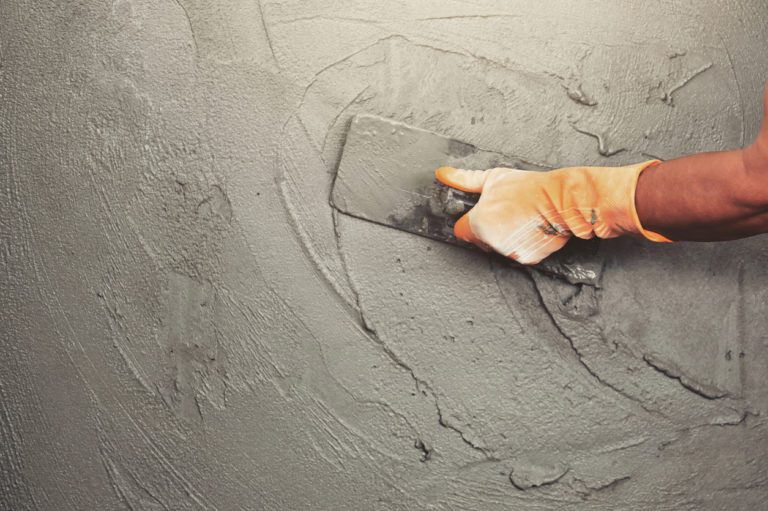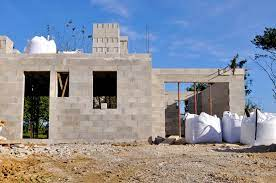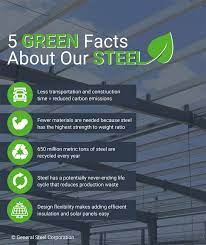
Cement is one of the most widely used building materials in the world, but its production is responsible for a significant amount of greenhouse gas emissions, primarily carbon dioxide. To address this issue, there are several sustainable alternatives to cement that can be used in construction projects.
What are Alternatives to Cement to Make Construction More Sustainable
Cement is a widely used building material in construction, but its production process is associated with a significant amount of carbon dioxide emissions. To make the construction industry more sustainable, several alternatives to cement have been developed that can reduce the carbon footprint of construction projects.
One alternative to cement is fly ash, a byproduct of coal-fired power plants that can be used as a cement replacement in concrete. By using fly ash instead of cement, construction projects can reduce their carbon footprint significantly, as fly ash production requires less energy and emits fewer greenhouse gases. Additionally, fly ash concrete is more durable than traditional concrete, which means it has a longer lifespan and requires less maintenance over time.
Another alternative to cement is geopolymer concrete, which is made by mixing an alkaline solution with industrial waste materials such as slag, fly ash, or clay. This concrete has a lower carbon footprint than traditional cement, and it is also more durable, with better chemical resistance and fire resistance. Geopolymer concrete has the potential to be a more sustainable building material in the long run, due to its lower production costs and lower environmental impact.
Natural materials such as bamboo, wood, and straw can also be used as alternatives to cement. Bamboo is a rapidly renewable resource that is strong and lightweight, making it an ideal material for building structures. Wood, particularly sustainably harvested wood, can be used for a variety of construction applications and has a lower carbon footprint than cement. Straw bale construction involves using bales of straw as building blocks, which are then coated in a natural plaster. This method is energy-efficient, as straw has a high insulating value and is readily available.
Carbonizing cement to decarbonize

Carbonizing cement is a promising strategy for reducing the carbon footprint of the construction industry. The production of traditional Portland cement, which is the most widely used cement in construction, accounts for a significant amount of carbon dioxide emissions. Carbonizing cement involves the use of carbon dioxide during the production process, which can result in a net reduction of carbon emissions.
Recycling of materials
Recycling materials is a critical component of sustainable development, and it is an essential practice that can help to reduce the environmental impact of various industries, including construction. Recycling involves collecting and processing materials that have reached the end of their useful life, then reusing them to create new products. In construction, many materials can be recycled, including concrete, metals, plastics, and wood.
Concrete is one of the most widely recycled materials in construction. After demolition, concrete can be crushed and reused as an aggregate in new concrete mixes. This helps to reduce the amount of waste that goes to landfills and reduces the need for virgin materials. Metals, such as steel and aluminum, can also be recycled and reused in construction. These materials have a high value, so recycling them helps to conserve resources and reduce energy consumption.
Plastics are another material that can be recycled in construction. Plastics can be used to make a variety of construction products, such as insulation, roofing materials, and piping. Recycling plastics helps to reduce the amount of waste in landfills and reduces the need for virgin materials.
Wood is also a widely recycled material in construction. Wood waste can be recycled and used to make new products, such as particleboard and fiberboard. Recycling wood reduces the amount of waste that goes to landfills and reduces the need for virgin materials. In addition to reducing waste and conserving resources, recycling materials also helps to reduce greenhouse gas emissions. The production of new materials requires energy, and recycling materials often requires less energy than producing new materials. By reducing the energy needed for production, the carbon footprint of the construction industry can be reduced.
Innovative materials
Construction material innovation is a critical aspect of attaining sustainable development. New materials are being created that outlast existing materials in terms of durability, energy efficiency, and environmental advantages. These materials can assist to lessen the building industry’s environmental effects while also giving economic benefits.
Cross-laminated timber (CLT), which is manufactured by stacking and gluing together thin pieces of wood in a crosswise pattern, is one example of a novel material. CLT has the strength and durability of traditional construction materials like steel and concrete, yet it has a reduced carbon footprint and can be produced in a more environmentally friendly manner. CLT is very lightweight, lowering shipping costs, and may be prefabricated offsite, reducing construction time and costs.
Another innovative material is aerogel, which is a highly porous, lightweight material that has excellent insulating properties. Aerogel can be used as an insulation material in buildings, which can reduce heating and cooling costs and improve energy efficiency. It is also highly resistant to fire, making it a safer option for construction.
Self-healing concrete is another innovative material that has been developed. Self-healing concrete contains bacteria that can produce calcium carbonate, which fills in cracks and improves the durability of the material. This can reduce the need for costly repairs and extend the lifespan of buildings.
Substitutes and Alternatives for Greener Concrete

Coal Waste: While coal waste can be used as a partial replacement for cement in concrete, it is not a sustainable option as it still relies on a non-renewable resource and can have negative environmental impacts.
Geopolymer Concrete: Geopolymer concrete is a more sustainable alternative to ordinary concrete since it replaces Portland cement with fly ash or other industrial waste products. It emits less carbon dioxide and is more durable than regular concrete.
Biomass Fuel and Tires: Biomass fuel and tires can be used as alternative fuels in cement kilns, reducing the reliance on fossil fuels and decreasing carbon emissions. However, they are not substitutes for the concrete itself.
Fiber Cement: Because it is created from natural elements such as wood pulp and cement, fiber cement is a more sustainable alternative to standard concrete. It emits less CO2 and may be utilized in a range of applications.
Graphene-Infused Concrete: Because of its superior strength and longevity, graphene-infused concrete has the potential to be a greener alternative to ordinary concrete, minimizing the need for maintenance and replacement. Nonetheless, graphene synthesis is still an energy-intensive process.
Root Veggies: Root veggies are not substitutes for concrete.
Recycled Plastic: Recycled plastic can be used as a partial replacement for sand in concrete, reducing the number of virgin materials used and increasing the sustainability of the product.
Old Concrete: Old concrete can be recycled and used as aggregate in new concrete, reducing the amount of waste sent to landfills and decreasing the reliance on virgin materials.
Adapt Buildings: Adapting buildings is not a substitute for concrete, but it can be a sustainable alternative to building new structures by repurposing existing buildings and reducing the need for new construction.
How to Use Less Concrete and Cement

Here are some ways to use less concrete and cement in construction:
- Opt for alternative materials: Consider using alternative materials, such as timber, bamboo, straw bales, or recycled plastic for construction. These materials have a lower carbon footprint than concrete and can provide similar structural strength.
- Use concrete substitutes: Use concrete substitutes like fly ash, slag, or silica fume, which are waste products of industrial processes and have a lower carbon footprint than traditional cement.
- Reduce concrete thickness: By reducing the thickness of concrete slabs and foundations, you can significantly reduce the amount of concrete used in construction. Consider using concrete reinforcement like steel or fiber to maintain structural strength.
- Design smarter: Design buildings with sustainability in mind. Consider passive heating and cooling techniques, such as shading, natural ventilation, and thermal insulation. By reducing the energy required to heat and cool buildings, you can reduce the amount of concrete needed for insulation.
- Use precast concrete: Precast concrete elements can be manufactured offsite and transported to the construction site, reducing the amount of concrete needed on site. Precast concrete is also more efficient in terms of material usage and can reduce waste.
- Reuse Concrete: Crushed concrete can be reused as an aggregate in new concrete or as a base material for roads, paths, and other construction projects. This can significantly reduce the amount of concrete waste that ends up in landfills.
By using these techniques, it is possible to reduce the amount of concrete and cement used in construction, which can help to reduce carbon emissions and promote sustainability in the building industry.
Alternatives to Concrete and Concrete Blockwork in Construction

Here are some alternatives to concrete and concrete blockwork in construction:
Cross Laminated Timber (CLT): CLT is a sustainable alternative to concrete and steel that is made from layers of timber panels that are glued together. It has a high strength-to-weight ratio and is a renewable resource.
Structural Insulated Panels (SIPs): SIPs are prefabricated panels made from insulation foam sandwiched between two sheets of oriented strand board or other materials. They are lightweight, energy-efficient, and can be assembled quickly.
Rammed Earth: Rammed earth is a sustainable alternative to concrete that uses compacted soil mixed with stabilizers such as cement or lime. It has good insulation properties and is a low-cost option for construction.
Straw Bale: Straw bale is a sustainable alternative to concrete that uses bales of straw as insulation in wall cavities. It is a low-cost and renewable resource that can be used for walls, roofs, and foundations.
Compressed Earth Blocks (CEBs): CEBs are compressed blocks of earth that are used for construction. They are made from local soil mixed with cement or lime and can be used for walls, floors, and roofs.
Hempcrete: Hempcrete is a sustainable alternative to concrete made from hemp fibers and lime. It has low carbon emissions and high insulation properties.
Ferrocement: Ferrocement is a sustainable alternative to concrete that uses a mesh of steel or other materials embedded in cement. It is a lightweight and low-cost option for construction.
Overall, there are several alternatives to concrete and concrete blockwork in construction that can increase sustainability and reduce carbon emissions. The choice of material will depend on factors such as cost, availability, and the specific requirements of the construction project.
Finding Sustainable Alternatives to Concrete
Here are some tips for finding sustainable alternatives to concrete:
Research: Conduct research on sustainable alternatives to concrete and concrete products. There are many options available that can reduce carbon emissions, increase sustainability, and provide long-lasting durability.
Consult with experts: Consult with engineers, architects, and other experts in the construction industry who have experience with sustainable construction materials. They can provide valuable insights and recommendations for alternative materials.
Consider local materials: Choose materials that are sourced locally to reduce transportation emissions and support the local economy. This can also help to reduce costs associated with transportation and storage.
Look for recycled materials: Many materials can be recycled or repurposed for use in construction, such as recycled plastic, glass, and metal. Using recycled materials reduces the amount of waste that ends up in landfills and reduces the need for new raw materials.
Choose materials with a low carbon footprint: Consider the carbon footprint of the materials you are using in construction. Materials such as timber, bamboo, and straw have lower carbon footprints than concrete and steel.
Prioritize durability and longevity: Choose materials that are durable and have a long lifespan to reduce the need for frequent replacement and maintenance. This can reduce waste and resource consumption over time.
Consider the entire lifecycle: Consider the entire lifecycle of the materials you are using, including production, use, and disposal. Look for materials that are recyclable or biodegradable at the end of their lifespan.
11 green construction elements that outperform concrete

Timber: Due to its strength, durability, and low carbon impact, timber is a renewable resource that is becoming increasingly popular for building.
Bamboo is a fast-growing, renewable resource with a high strength-to-weight ratio that may be utilized as a green alternative to typical building materials.
Hempcrete: Hempcrete is a sustainable alternative to concrete made from hemp fibers and lime. It has low carbon emissions and high insulation properties.
Rammed Earth: Rammed earth is a sustainable alternative to concrete that uses compacted soil mixed with stabilizers such as cement or lime. It has good insulation properties and is a low-cost option for construction.
Straw Bale: Straw bale is a sustainable alternative to concrete that uses bales of straw as insulation in wall cavities. It is a low-cost and renewable resource that can be used for walls, roofs, and foundations.
Cross Laminated Timber (CLT): CLT is a sustainable alternative to concrete and steel that is made from layers of timber panels that are glued together. It has a high strength-to-weight ratio and is a renewable resource.
Mycelium: Mycelium is a biodegradable and renewable alternative to typical building materials that leverages the root structure of mushrooms to make a robust and lightweight material.
Geopolymer concrete: is a sustainable alternative to ordinary concrete that employs industrial waste materials like fly ash and slag. It has low carbon emissions and a long lifespan.
Recycled plastic: may be used to make a variety of building materials such as insulation, roofing, and siding. It is a low-cost and environmentally friendly alternative to standard materials.
Ferrocement: Ferrocement is a sustainable alternative to concrete that uses a mesh of steel or other materials embedded in cement. It is a lightweight and low-cost option for construction.
Earth Bags: Earthbags are a sustainable alternative to concrete that uses bags filled with earth or other materials to create walls and other structures. They are low-cost and can be used in a range of building applications.
Mycelium is a biodegradable and renewable alternative to traditional building materials that uses the root structure of mushrooms to create a durable and lightweight material.
Geopolymer concrete is a greener alternative to traditional concrete that uses industrial waste materials such as fly ash and slag. It emits less carbon and has a long lifetime.
Plastic that has been recycled may be used to manufacture a range of building materials such as insulation, roofing, and siding. It is a low-cost, eco-friendly alternative to regular materials.
Three Elements of Green Building Material
There are three key elements of green building materials:
- Sustainability: Green building materials are made from sustainable resources that are renewable or have a low environmental impact. For example, materials made from renewable resources like timber, bamboo, or straw bales have a lower environmental impact than materials made from non-renewable resources like concrete or steel.
- Energy Efficiency: Green building materials are designed to improve energy efficiency and reduce the energy required to heat, cool, and light buildings. For example, materials with high thermal insulation properties like hempcrete, straw bale, or rammed earth can reduce the amount of energy needed to heat buildings.
- Health and Safety: Green building materials are designed to be safe and healthy for both people and the environment. They should not contain harmful chemicals or produce harmful emissions that can negatively impact indoor air quality. For example, materials like cross-laminated timber or low-VOC paints and finishes can improve indoor air quality and reduce the risk of health problems for building occupants.
Is waste steel more environmentally friendly than concrete?

Waste steel and concrete have different environmental impacts, so it is difficult to compare them directly. However, waste steel is generally considered to be more environmentally friendly than concrete because it is easier to recycle and has a lower carbon footprint.
Steel is a highly recyclable material, and the recycling process consumes less energy and generates fewer greenhouse gas emissions compared to producing new steel from raw materials. In contrast, concrete recycling can be challenging due to the difficulty in separating the different components of the material, and the process can be energy-intensive.
Leave a Reply